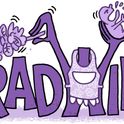Clint is dead, but his genome lives on. DNA donors for animal genome projects aren't usually given names, but Clint was an exception. He was a chimpanzee, and the publication of his genome at the beginning of September has highlighted the confusion that exists about our relationship with—and responsibilities towards—chimps and other great apes.
One viewpoint holds that experiments on chimps are vital for the development of urgently needed new drugs. Chimpanzees are the only animals that can be successfully infected with the Aids virus and with hepatitis B and C, and they suffer from their own forms of malaria parasite. So they are pretty much irreplaceable in testing new therapies for these diseases.
Yet the US is the only developed country apart from Japan (where a ban has been mooted) that uses chimps in biomedical research. Even there, a moratorium has been imposed since 1997 on the breeding of chimps for research at the National Institutes of Health, the US equivalent of the Medical Research Council. And some US researchers have argued that ethical restrictions on such research should be tightened to make them broadly the same as those for human subjects who cannot give informed consent. They include archiving all tissue samples and identifying each animal by a name.
But just how closely related are human beings and chimps? That is one of the issues the genome sequence will address. A 98 per cent genetic similarity between the two species is commonly quoted, but the precise figure remains uncertain. In any event, these numbers highlight the dangerous, reductive simplification that genome studies encourage. There are genetic differences between individuals and between different populations of chimps, just as there are in human beings, and in any case an organism's genetic make-up is not only a question of which genes they have, but also how they are used.
The "soft" alternative to answering the question has been to compare behaviours. But cognitive scientists like Gary Marcus at New York University say that training chimps to communicate using sign language or to recognise symbols does not get you very far. "It's a silly game to see how much a chimp can act like a human," Marcus says.
Comparisons are also drawn the other way round, with chilling implications. Jane Goodall was the first to report that chimps in the wild indulge in murder, cannibalism and a kind of gang warfare, leading others to claim that these instincts must be natural to humans too. But that depressing message is counterbalanced by the behaviour of the bonobo—once called the pygmy chimp but actually a separate species—to which we are equally closely related. Bonobos are far less aggressive, and their social system is dominated by females. And they are utter hedonists, having sex more readily and in more varied ways than the most out-there Faliraki clubber.
The chimp genome should provide insights into human evolution, particularly the genetic components of linguistic skills. It might, depending on future legislation, supply an important biomedical resource. But it seems unlikely to resolve our conflicts about the moral responsibilities we owe the great apes. And neither does it seem likely to make much impact on the crisis in conservation, where disease and illegal hunting threaten to drive them to extinction within decades.
Progress in lie detection
Another matter that divides experts is whether the greatest invention of US psychologist William Marston was the Wonder Woman comic strip or the polygraph lie detector. The FBI and CIA love the polygraph, which aims to expose liars by measuring changes in perspiration, pulse and blood pressure. But it has not uncovered a single spy, and in 2003 the US National Academy of Sciences concluded it was useless.
So how now to spot the liars or potential terrorists? The infamous statement by Cofer Black, former head of counterterrorism at the CIA, that "after 9/11 the gloves come off" hints at one solution. But could science yet render obsolete the passionate debate about torture and whether it can ever be justified in extracting information that might save lives? Forget truth drugs: now scientists can look straight into your mind.
In Seattle, Brain Fingerprinting Laboratories, established by neuroscientist Lawrence Farwell, is developing a technique that purportedly scans the electrical activity of neurons and finds a telltale brainwave produced when we lie. Other scientists are sceptical, but the basic idea seems sound: magnetic resonance imaging (MRI), which monitors blood flow in the brain, has revealed areas that "light up" during lying. Even the smoothest spy would have trouble concealing that.
Whistle while you walk
Inventors in Pennsylvania have created a backpack that generates enough electricity from the movements induced by walking to power an MP3 player, head torch and GPS, with more juice to spare. The pack slides up and down on a frame, driving a rotary generator. The extra effort needed to carry a shifting pack is far less than expected—in fact, some think that with the right arrangement of loads and springs, the pack could be easier to lug than a fixed one.












